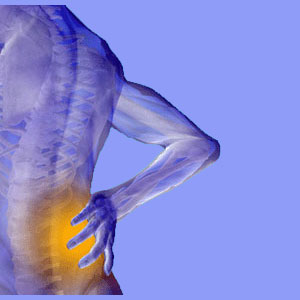
Are sciatica and aging related? Since sciatica is often blamed on spinal degeneration and since it is a scientific fact that spinal degeneration increases with age, any logical person would assume that there is a correlation. However, this assumption would be incorrect.
If the spine worsens structurally with age, why does sciatica tend to fall off in frequency and severity as people get older? This is a crucial question to ask and an even more important query to answer. We will do just that during the course of this discussion.
This post details the relationship between age and sciatica and provides some very useful information for patients and care providers alike.
Sciatica and Aging Facts
Sciatica is actually a less common problem in the elderly than in younger people. This is a fact supported by decades of clinical and research science and is indisputable. Furthermore, the worst cases of severe and chronic sciatica are actually rarely found in older people, with the majority being demonstrated by otherwise healthy people in the prime years of responsibility (30 to 50).
Most sciatica is blamed on spinal deterioration, including disc degeneration, arthritis and herniated discs in the lumbar spine. However, this really makes no sense for many reasons.
Very few cases of spinal degeneration are pathological. Most profiles consist of universal expected and completely normal age-related changes to the vertebral column. In essence, most spinal degeneration is a scapegoat for pain, rather than a source of pain. We cover this subject matter well in every post dedicated to conditions that often act as scapegoats.
Even if spinal degeneration was inherently painful (it’s not), the severity of degeneration increases with age. However, the occurrence of sciatica and the severity of sciatica symptoms both tend to decrease with age. This creates quite a problem for doctors who blame sciatica on spinal scapegoats. We have heard many clueless care providers explain this away saying that the nerves are failing in older people, which is why they no longer feel pain. However, there is no evidence of this occurring in more than 98% of patients used as examples, so this is rather a ridiculous point, even if it is valid in the remaining 2%.
Why is Sciatica More Common in Younger People
Younger, healthier people have more sciatica than older, frail people. This fact alone dispels the structural model of pain. However, we can go further and provide more evidence of why younger people tend to get chronic sciatica and older people tend to recover or not develop pain. For this example of proof, we offer the wonderful Dr. John Sarno’s treatise on this occurrence:
Chronic and treatment-resistant sciatica is mostly a condition of regional ischemia. This process is enacted purposefully as a defense and distraction mechanism by the subconscious mind. The process occurs to protect against repressed and suppressed subconscious psychoemotional issues and stresses. Physical pain is a perfect camouflage for psychological pain.
People in the prime ages of responsibility are most prone to develop chronic pain because they are under the most stress. This is not only the normal stresses one associates with conscious recognition, but also a variety of subconscious stresses and sensitivities that are far more powerful. Once the age of responsibility has passed, most people tend to feel better physically, despite their bodies aging and degenerating year by year. This is the model of pain that explains tension myoneural syndrome; which is not coincidentally one of the major causes of chronic sciatica.
Sciatica and Aging Summation
Yes, aging causes the body to fail in many ways. However, aging rarely leads to chronic pain. Instead, many people who suffer chronic pain are in their most active and responsible years. Once the burden of responsibility passes and time allows the psychological makeup of the person to accept and process emotional sensitivities, people tend to feel better, despite their progressive anatomical breakdown. This is a fact that does not encompass every person, but does describe the majority of people. Chronic pain statistics worldwide for a diversity of diagnoses supports this truth 100%.
In essence, getting older is not the cause of sciatica in most seniors. Sure, in a few it is certainly the cause, but in many, many others, age tends to help them to feel better, rather than worse.





